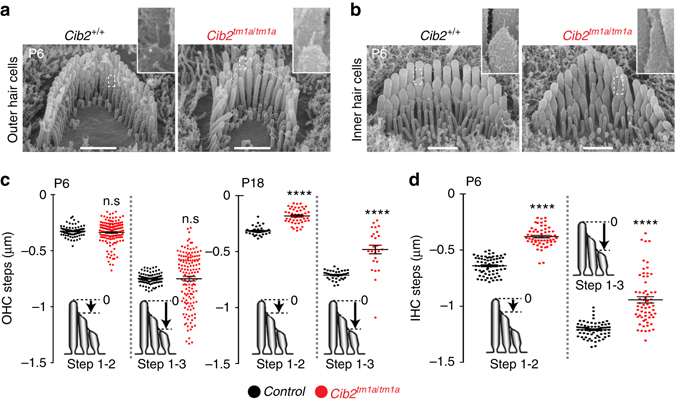Fig. 4.

CIB2 deficiency leads to over-elongation of the transducing shorter row stereocilia in the auditory hair cells. a, b SEM images of OHC (a) and IHC (b) bundles from wild-type (left) and Cib2 tm1a/tm1a (right) littermate mice at P6 at the same cochlear location in the middle of the apical turn. Insets show magnified images of stereocilia tips and stereocilia links in the areas indicated by dashed boxes. c, d Quantification of the step height differences between the 1st (longest) and 2nd and between the 1st and 3rd rows of stereocilia (illustrated on the inset cartoons) in the OHC (c) and IHC (d) bundles at P6 (c, left and d) and P18 (c, right). Each dot represents one pair of stereocilia. Mean ± SEM values are also shown. We were not able to quantify the staircase morphology in the IHCs at P18 because mouse IHCs are very fragile at this age and their bundles lose cohesiveness after dissection. Number of cells: IHCs, wild-type, n = 6; Cib2 tm1a/tm1a, n = 6; OHCs at P6, wild-type, n = 9; Cib2 tm1a/tm1a, n = 18; OHCs at P18, wild-type, n = 10; Cib2 tm1a/tm1a, n = 10. In all panels, asterisks indicate statistical significance of the difference between the data from mutant and wild-type cells. NS, not significant; ****p < 0.0001 (ANOVA). Scale bars: 1 μm
